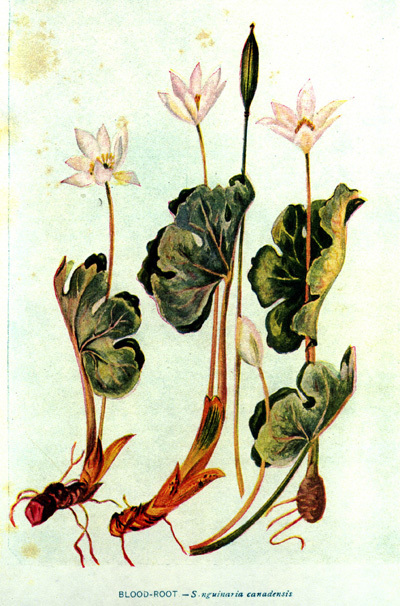Bloodroot
Title
Bloodroot
Description
Molly Ockett's intimate understanding of the natural environment and her use of herbal remedies to cure many of the afflictions of both Indians and white settlers earned her the respect and gratitude of those around her. Henry Tufts called her "the great Indian doctress" and devised ways of getting Molly Ockett to reveal her secrets, a favor normally reserved only for those who were especially kind to her. But the question remains—why did the white settlers trust Molly Ockett to treat them during times of illness or accident? A decided lack of health-care options (Bethel's first physician, Dr. Timothy Carter, did not set up practice until 1799), a traditional reliance in rural New England on midwives for general medical care (in addition to delivering babies), and a lack of knowledge concerning local herbal remedies all worked to her advantage. By successfully turning raw materials (including Bloodroot, illustrated here) into tonics, salves, or poultices, Molly Ockett gained status in the world of the white settlers. Molly Ockett often came to Newry and Riley Plantation ("Ketchum"), where she taught Martha Russell Fifield to count in Indian, and shared with her some medicinal knowledge and instructions for making root beer and dyes. As a midwife, Molly Ockett attended the birth of Andover's first white child, born to her friend Sarah Merrill in July 1790. The Poland Spring mineral waters, world famous by the late 19th century, were said to have been esteemed by Molly Ockett, who was regarded by some of Poland's early residents as a witch, though skillful as a doctor. Perhaps the most re-told story of Molly Ockett's healing powers is her cure during the winter of 1809-10 of the infant Hannibal Hamlin, who later became Abraham Lincoln's first vice-president.
Identifier
mollyockett-21

